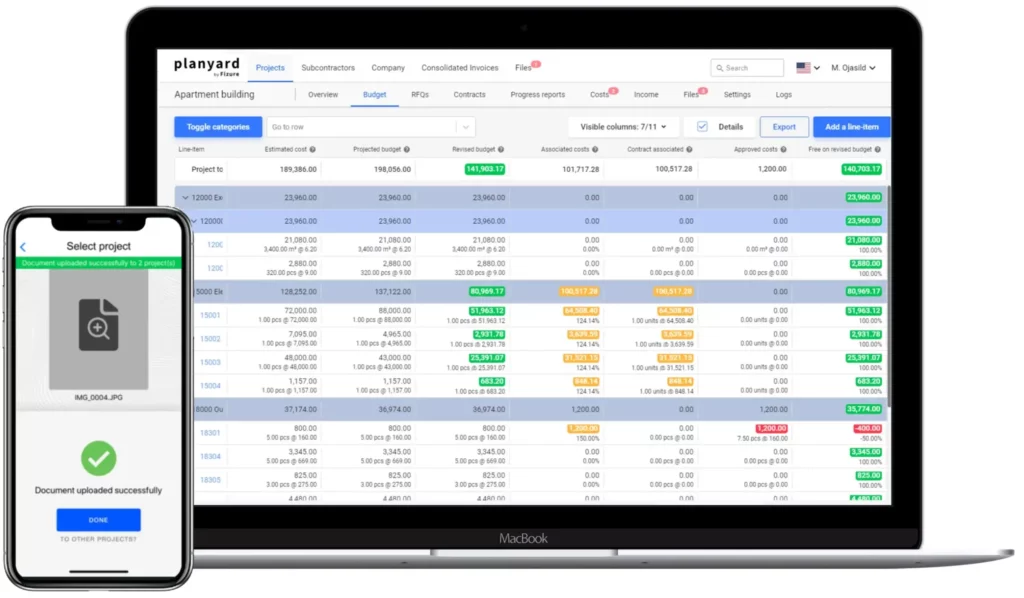Tailored Construction Management Software Program: Optimizing Source Allowance and Budgeting Methods
In the realm of modern building administration, the importance of tailored software program solutions can not be overstated. These sophisticated devices use a nuanced method to optimizing source allotment and budgeting strategies, crucial elements for effective project implementation. By diving into the details of exactly how such software can boost resource appropriation techniques and refine budget plan optimization techniques, a clear pathway towards increased task effectiveness arises. In this digital age where accuracy and effectiveness power supreme, checking out the influence of tailored building and construction management software program on these important elements uncovers a realm of opportunities that might shape the future of the market.
Advantages of Tailored Software Solutions
Tailored software application options offer a myriad of advantages to construction monitoring companies seeking to enhance performance and simplify operations. By tailoring software program options to deal with project monitoring, organizing, budgeting, and resource allocation, companies can enhance their workflows and attain higher productivity.
An additional advantage of tailored software options is the capability to provide real-time understandings and analytics. Construction management firms can utilize data-driven decision-making to monitor task development, recognize bottlenecks, and make changes quickly. This proactive strategy improves task outcomes and aids firms remain on track with timelines and budgets.

Boosted Resource Allowance Approaches
Executing effective resource appropriation techniques is important for building and construction management firms to enhance task end results and take full advantage of performance. Enhanced resource allowance approaches entail purposefully designating employees, tools, and materials to particular tasks to make sure optimum application of sources. One vital aspect of enhanced resource allotment is the capability to precisely anticipate job needs and assign sources as necessary. By leveraging construction management software that offers real-time tracking and reporting features, firms can dynamically readjust allocations as project needs evolve, leading to boosted effectiveness and cost-effectiveness.
Moreover, boosted resource allocation approaches allow construction companies to recognize and attend to potential traffic jams or resource constraints proactively. By performing routine analyses of resource utilization and efficiency metrics, managers can make data-driven choices to redistribute sources successfully and prevent hold-ups. This positive technique not just improves job timelines yet additionally lessens the threat of budget plan overruns as a result of inefficient source allocation.
Spending Plan Optimization Techniques
To accomplish optimal monetary performance in construction jobs, effective budget plan optimization strategies play a pivotal function in making certain cost control and job success. One vital strategy is the establishment of an in-depth task budget that assigns sources based upon priority and vital demands. By clearly defining the range of job, setting reasonable expense price quotes, and continually tracking expenditures, building supervisors can recognize potential price overruns beforehand and take rehabilitative activities. In addition, implementing value design practices can help simplify job costs without endangering quality. This entails evaluating each project component to identify possibilities for price financial savings while preserving performance standards. Leveraging historical data and sector standards makes it possible for building and construction supervisors to make educated decisions about spending plan allotments and identify locations where investing can be enhanced. By integrating these budget optimization strategies right into building and construction management software application, task stakeholders can enhance monetary planning, source allowance, and general budget monitoring to drive task success and productivity.

Influence On Task Efficiency
Maximizing building and construction management software can substantially improve task performance by improving communication, improving partnership, and helping with data-driven decision-making. In addition, building administration software application can offer useful insights with information analytics, enabling job managers to make educated decisions quickly and accurately.
Moreover, the automation of regular tasks such as organizing, spending plan monitoring, and resource allotment can free up valuable time for project groups to concentrate on important tasks, ultimately accelerating task shipment. The ability to check job progress in real-time and identify potential traffic jams allows aggressive analytic, preventing concerns from rising and causing delays. Overall, the effect of tailored building and construction management software on task performance is obvious, using an affordable benefit by enhancing workflows and making the most of efficiency.
Future Trends in Construction Software
As the building industry remains to develop, innovations in innovation are forming the future landscape of building and construction software program remedies. One substantial pattern imminent is the raising combination of artificial intelligence (AI) and artificial intelligence abilities in building and construction software. These modern technologies have the prospective to change how building tasks are managed by allowing anticipating analytics, automated decision-making processes, and improved project understandings.
One more future fad in building software program is the expanding emphasis on cloud-based options. Cloud modern technology offers enhanced versatility, scalability, and accessibility for construction teams, permitting real-time cooperation and data sharing across project stakeholders. This shift towards cloud-based software is anticipated to enhance job performance, improve interaction, and boost general project outcomes.
Additionally, the increase of Building Info Modeling (BIM) is anticipated to proceed forming the building software application landscape. BIM software program promotes 3D modeling, visualization, and information monitoring, causing enhanced project coordination, lowered errors, and boosted job outcomes. Accepting these future trends in construction software will certainly be critical for firms aiming to remain competitive and drive development in the industry.
Conclusion
In verdict, customized construction administration software program supplies countless advantages such as improved resource allowance approaches and budget plan optimization techniques. This software program has a construction software considerable impact on task performance by simplifying processes and boosting general efficiency (construction project management software). As innovation remains to breakthrough, future fads in building and construction software application are expected to more enhance source allowance and budgeting approaches for building and construction tasks